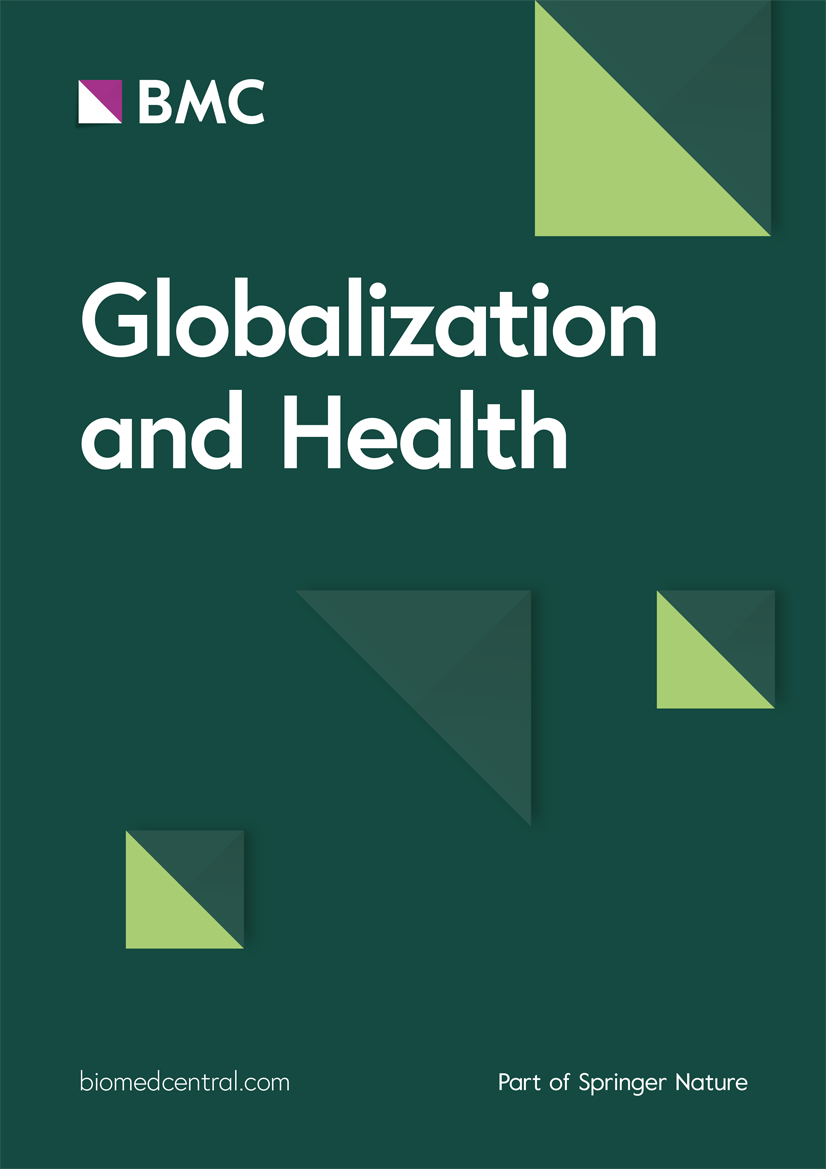Second-generation migrant – European commission [Internet]. [cited 2025 Feb 28]. Available from: https://home-affairs.ec.europa.eu/networks/european-migration-network-emn/emn-asylum-and-migration-glossary/glossary/second-generation-migrant_en.
Eurostat. Foreign-born people and their descendants – main characteristics [Internet]. [cited 2025 Mar 3]. Available from:https://ec.europa.eu/eurostat/statistics-explained/index.php?title=Foreign-born_people_and_their_descendants_-_main_characteristics.
Fertility statistics [Internet]. [cited 2025 May 26]. Available from: https://ec.europa.eu/eurostat/statistics-explained/index.php?title=Fertility_statistics.
Lebano A, Hamed S, Bradby H, Gil-Salmerón A, Durá-Ferrandis E, Garcés-Ferrer J, et al. Migrants’ and refugees’ health status and healthcare in Europe: a scoping literature review. BMC Public Health. 2020 June 30;20(1):1039.
Google Scholar
Darebo TD, Spigt M, Teklewold B, Badacho AS, Mayer N, Teklewold M. The sexual and reproductive healthcare challenges when dealing with female migrants and refugees in low and middle-income countries (a qualitative evidence synthesis). BMC Public Health. 2024 Feb 19;24(1):520.
Google Scholar
Almeida LM, Caldas J, Ayres-de-Campos D, Salcedo-Barrientos D, Dias S. Maternal healthcare in migrants: a systematic review. Matern Child Health J. 2013 Oct 1;17(8):1346–54.
Google Scholar
de Jong L, Pavlova M, Winters M, Rechel B. A systematic literature review on the use and outcomes of maternal and child healthcare services by undocumented migrants in Europe. Eur J Public Health. 2017 Dec 1;27(6):990–97.
Google Scholar
Eslier M, Azria E, Chatzistergiou K, Stewart Z, Dechartres A, Deneux-Tharaux C. Association between migration and severe maternal outcomes in high-income countries: systematic review and meta-analysis. PLoS Med. 2023 June 22;20(6):e1004257.
Google Scholar
Sturrock S, Williams E, Greenough A. Antenatal and perinatal outcomes of refugees in high income countries. J Perinat Med. 2021 Jan 1;49(1):80–93.
Google Scholar
Ramraj C, Pulver A, Siddiqi A. Intergenerational transmission of the healthy immigrant effect (hie) through birth weight: a systematic review and meta-analysis. Soc Sci Med. 2015 Dec 1;146:29–40.
Google Scholar
Page MJ, McKenzie JE, Bossuyt PM, Boutron I, Hoffmann TC, Mulrow CD, et al. The prisma 2020 statement: an updated guideline for reporting systematic reviews. BMJ. 2021 Mar 29;372:n71.
Google Scholar
Covidence systematic review software, veritas health innovation. Available at: https://www.covidence.org.
JBI Critical Appraisal Tools | JBI [Internet]. [cited 2025 Oct 8]. Available from: https://jbi.global/critical-appraisal-tools.
Choté AA, Koopmans GT, de Groot CJM, Hoefman RJ, Jaddoe VWV, Hofman A, et al. Differences in timely antenatal care between first and second-generation migrants in the Netherlands. J Immigr Minor Health. 2014 Aug;16(4):631–37.
Google Scholar
Sørbye IK, Stoltenberg C, Sundby J, Daltveit AK, Vangen S. Stillbirth and infant death among generations of Pakistani immigrant descent: a population-based study. Acta Obstet Gynecol Scand. 2014 Feb;93(2):168–74.
Google Scholar
David M, Borde T, Brenne S, Ramsauer B, Henrich W, Breckenkamp J, et al. Comparison of perinatal data of immigrant women of Turkish origin and German women – results of a prospective study in Berlin. Geburtshilfe Frauenheilkd. 2014 May;74(5):441–48.
Google Scholar
David M, Borde T, Brenne S, Henrich W, Breckenkamp J, Razum O. Caesarean section frequency among immigrants, second- and third-generation women, and non-immigrants: prospective study in Berlin/Germany. PLoS One. 2015 May 18;10(5):e0127489.
Google Scholar
Boerleider AW, Manniën J, van Stenus CM, Wiegers TA, Feijen-de Jong EI, Spelten ER, et al. Explanatory factors for first and second-generation non-western women’s inadequate prenatal care utilisation: a prospective cohort study. BMC Pregnancy Childbirth. 2015 Apr 21;15(1):98.
Google Scholar
Reiss K, Breckenkamp J, Borde T, Brenne S, Henrich W, David M, et al. The association of pre-pregnancy overweight and obesity with delivery outcomes: a comparison of immigrant and non-immigrant women in Berlin, Germany. Int J Public Health. 2016 May;61(4):455–63.
Google Scholar
Razum O, Reiss K, Breckenkamp J, Kaufner L, Brenne S, Bozorgmehr K, et al. Comparing provision and appropriateness of health care between immigrants and non-immigrants in Germany using the example of neuraxial anaesthesia during labour: cross-sectional study. BMJ Open. 2017 Aug 21;7(8):e015913.
Google Scholar
Bakken KS, Skjeldal OH, Stray-Pedersen B. Obstetric outcomes of first- and second-generation Pakistani immigrants: a comparison study at a Low-risk maternity ward in Norway. J Immigr Minor Health. 2017 Feb;19(1):33–40.
Google Scholar
David M, Borde T, Brenne S, Ramsauer B, Henrich W, Breckenkamp J, et al. Obstetric and perinatal outcomes among immigrant and non-immigrant women in Berlin, Germany. Arch Gynecol Obstet. 2017 Oct;296(4):745–62.
Google Scholar
Lesueur F E-K, Sutter-Dallay AL, Panico L, Azria E, der Waerden J V, Regnault Vauvillier N, et al. The perinatal health of immigrant women in France: a nationally representative study. Int J Public Health. 2018 Dec 1;63(9):1027–36.
Google Scholar
David M, Borde T, Brenne S, Ramsauer B, Hinkson L, Henrich W, et al. Obstetric care quality indicators and outcomes based on the degree of acculturation of immigrants-results from a cross-sectional study in Berlin. Arch Gynecol Obstet. 2018 Feb;297(2):313–22.
Google Scholar
David M, Razum O, Henrich W, Ramsauer B, Schlembach D, Breckenkamp J. The impact of migration background on maternal near miss. Arch Gynecol Obstet. 2019 Aug;300(2):285–92.
Google Scholar
Breckenkamp J, Razum O, Henrich W, Borde T, David M. Effects of maternal obesity, excessive gestational weight gain and fetal macrosomia on the frequency of cesarean deliveries among migrant and non-migrant women – a prospective study. J Perinat Med. 2019 May 27;47(4):402–08.
Google Scholar
Seidel V, Gürbüz B, Großkreutz C, Vortel M, Borde T, Rancourt RC, et al. The influence of migration on women’s use of different aspects of maternity care in the German health care system: secondary analysis of a comparative prospective study with the migrant friendly maternity care questionnaire (MFMCQ). Birth. 2020;47(1):39–48.
Google Scholar
Miani C, Ludwig A, Breckenkamp J, Sauzet O, Doyle IM, Hoeller-Holtrichter C, et al. Socioeconomic and migration status as predictors of emergency caesarean section: a birth cohort study. BMC Pregnancy Childbirth. 2020 Jan 13;20(1):32.
Google Scholar
Aradhya S, Katikireddi SV, Juárez SP. Immigrant ancestry and birthweight across two generations born in Sweden: an intergenerational cohort study. BMJ Glob Health. 2022 Apr 25;7(4).
Wändell P, Li X, Stattin NS, Carlsson AC, Sundquist J, Crump C, et al. Diabetes risk during pregnancy among second-generation immigrants: a national cohort study in Sweden. Nutr Metab Cardiovasc Dis NMCD. 2023 Oct;33(10):2028–34.
Google Scholar
Lee M, Pöhlmann A, Abou-Dakn M, David M. Acculturation experiences and preterm birth in Berlin: does acculturative stress contribute to preterm birth? J Immigr Minor Health. 2023 Aug 1;25(4):765–74.
Google Scholar
Wändell P, Crump C, Li X, Stattin NS, Carlsson AC, Sundquist J, et al. Hypertension in pregnancy among immigrant and Swedish women: a cohort study of all pregnant women in Sweden. J Am Heart Assoc. 2024 Mar 5;13(5):e031125.
Google Scholar
Cresswell JA, Yu G, Hatherall B, Morris J, Jamal F, Harden A, et al. Predictors of the timing of initiation of antenatal care in an ethnically diverse urban cohort in the Uk. BMC Pregnancy Childbirth. 2013 May 3;13(1):103.
Google Scholar
Choté AA, Koopmans GT, Redekop WK, de Groot CJM, Hoefman RJ, Jaddoe VWV, et al. Explaining ethnic differences in late antenatal care entry by predisposing, enabling and need factors in the Netherlands. The Gener R Study. Matern Child Health J. 2011;15(6):689–99.
Google Scholar
Wang W, Xie X, Yuan T, Wang Y, Zhao F, Zhou Z, et al. Epidemiological trends of maternal hypertensive disorders of pregnancy at the global, regional, and national levels: a population-based study. BMC Pregnancy Childbirth. 2021 May 8;21(1):364.
Google Scholar
Taousani E, Papaioannou KG, Mintziori G, Grammatikopoulou MG, Antonakou A, Tzitiridou-Chatzopoulou M, et al. Lifestyle behaviors and gestational diabetes mellitus: a narrative review. Endocrines. 2025 Mar;6(1):6.
Google Scholar
Arabzadeh H, Doosti-Irani A, Kamkari S, Farhadian M, Elyasi E, Mohammadi Y. The maternal factors associated with infant low birth weight: an umbrella review. BMC Pregnancy Childbirth. 2024 Apr 25;24(1):316.
Google Scholar
Kierans WJ, Joseph K, Luo ZC, Platt R, Wilkins R, Kramer MS. Does one size fit all? The case for ethnic-specific standards of fetal growth. BMC Pregnancy Childbirth. 2008 Jan 8;8:1.
Google Scholar
Lopez-Class M, Castro FG, Ramirez AG. Conceptions of acculturation: a review and statement of critical issues. Soc Sci Med. 2011 May 1;72(9):1555–62.
Google Scholar
Pickett KE, Wilkinson RG. Income inequality and health: a causal review. Soc Sci Med. 2015 Mar 1;128:316–26.
Google Scholar
Rydahl E, Declercq E, Juhl M, Maimburg RD. Cesarean section on a rise—does advanced maternal age explain the increase? A population register-based study. PLoS One. 2019 Jan 24;14(1):e0210655.
Google Scholar
Marconi AM, Manodoro S, Cipriani S, Parazzini F. Cesarean section rate is a matter of maternal age or parity? J Matern Fetal Neonatal Med. 2022 Aug 3;35(15):2972–75.
Google Scholar
Merry L, Small R, Blondel B, Gagnon AJ. International migration and caesarean birth: a systematic review and meta-analysis. BMC Pregnancy Childbirth. 2013 Jan 30;13(1):27.
Google Scholar
Fair F, Raben L, Watson H, Vivilaki V, van den MM, Soltani H, et al. Migrant women’s experiences of pregnancy, childbirth and maternity care in European countries: a systematic review. PLoS One. 2020 Feb 11;15(2):e0228378.
Google Scholar
Klemetti R, Gissler M, Sainio S, Hemminki E. At what age does the risk for adverse maternal and infant outcomes increase? Nationwide register-based study on first births in Finland in 2005-2014. Acta Obstet Gynecol Scand. 2016 Dec;95(12):1368–75.
Google Scholar
Höhn A, Andersson G, Kulu H, Campbell B. Childbearing across immigrants and their descendants in Sweden: the role of generation and gender. Int Migr Rev. 2024 Apr 25;01979183241245072.
Shaw J, Sekalala S. Health data justice: building new norms for health data governance. NPJ Digit Med. 2023 Feb 28;6(1):30.
Google Scholar
Midtbøen AH. The Invisible Second generation? Statistical discrimination and immigrant stereotypes in employment processes in Norway. J Ethn Migr Stud. 2014 Oct 3;40(10):1657–75.
Google Scholar
Gillen M, Goodman A, Danaher F, Bosson R, Greenwald M, Jasrasaria R. Intergenerational trauma and resilience among Im/Migrant families. Child Ment Health Outcomes Psychosoc Mech Transm. Health (N Y). 2024 Oct 12;16(10):888–920.
Google Scholar
Romero AJ, Martinez D, Carvajal SC. Bicultural stress and adolescent risk behaviors in a community sample of latinos and non-Latino European Americans. Ethn Health. 2007 Nov 1;12(5):443–63.
Google Scholar
Diguisto C, Saucedo M, Kallianidis A, Bloemenkamp K, Bødker B, Buoncristiano M, et al. Maternal mortality in eight European countries with enhanced surveillance systems: descriptive population based study. BMJ. 2022 Nov 16;379:e070621.
Google Scholar
Vousden N, Bunch K, Kenyon S, Kurinczuk JJ, Knight M. Impact of maternal risk factors on ethnic disparities in maternal mortality: a national population-based cohort study. Lancet Reg Health – Eur. 2024 Mar 29;40:100893.
Google Scholar
Geronimus AT. Black/White differences in the relationship of maternal age to birthweight: a population-based test of the weathering hypothesis. Soc Sci Med 1982. 1996 Feb;42(4):589–97.
Wallace M, Hiam L, Aldridge R. Elevated mortality among the second-generation (children of migrants) in Europe: what is going wrong? A review. Br Med Bull. 2023 Nov 1;148(1):5–21.
Google Scholar
Gkiouleka A, Huijts T. Intersectional migration-related health inequalities in europe: exploring the role of migrant generation, occupational status & gender. Soc Sci Med. 2020 Dec 1;267:113218.
Google Scholar







